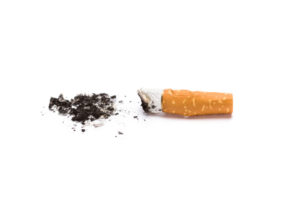Many recent studies have investigated the safety of blood according to donor demographics (e.g. age, sex, genetic polymorphisms) and blood processing and storage (e.g. storage time, anticoagulants, collection methods). Little is known, however, how tobacco use affects donated blood and whether there is a negative impact for transfusion recipients. In a pilot study, DeSimone et al. evaluated 100 randomly selected RBC units from unique donors and used mass spectrometry to measure cotinine levels (a metabolite of nicotine). They found 13% (13/100) of the units were positive for cotinine at levels consistent with those found in individuals who smoke; these cotinine positive units also had a higher carboxyhemoglobin content than cotinine negative units (p=0.007). Patients who were transfused with one of the cotinine positive RBC units had a significantly lower post-transfusion hematocrit (n=10; median HCT increment 1.2%) compared to patients transfused with a cotinine negative RBC unit (n=25; median HCT increment 3.6%; p=0.014); post-transfusion hemoglobin levels were also lower in patients transfused with cotinine positive RBC units. Fortunately, no significant changes to vital signs or transfusion reactions were reported. Further research is critically needed to understand how metabolites from tobacco use may affect donated blood and transfusions.
References:
- Roubinian NH and T. Kanias. Blood donor component-recipient linkages: is there fire when there is smoke? Transfusion 2019; 59; 2485-2488.
- DeSimone RA, Hayden JA, Mazur CA, Vasovic LV, et al. Red blood cells donated by smokers: A pilot investigation of recipient transfusion outcomes. Transfusion 2019; 59; 2537-2543.

